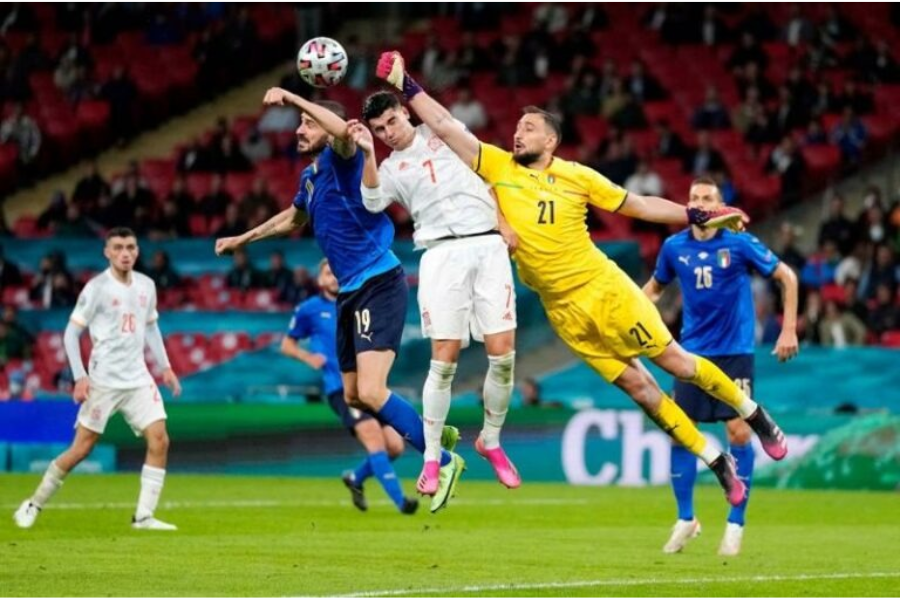Catenaccio, an Italian term meaning “bolt of a door,” refers to a defensive football tactic that places a strong emphasis on a well-structured defense. Its primary aim is to limit the opposition’s chances by creating a nearly impenetrable defense, and it is particularly effective against teams with a strong attacking style.
This article explores the ins and outs of the catenaccio system, its evolution, and its impact on football today.
The Origins and Evolution of Catenaccio
Catenaccio first emerged in the 1960s in Italy, where football tactics were largely shaped by the need to defend against potent attacking teams. It became widely known after teams like Inter Milan adopted it under manager Helenio Herrera. The tactic revolutionized the way teams thought about defense, leading to a more defensive approach in international and club football.
As the game evolved, catenaccio became more flexible. Initially known for its rigid structure, modern adaptations have allowed teams to use counter-attacking strategies alongside their defensive setups, making it relevant in today’s game.
How Catenaccio Works: Key Features and Principles
At its core, catenaccio revolves around a disciplined and organized defensive line. The strategy often features a “sweeper” positioned just behind the main defenders. This player’s role is to clear any threats that break through the initial line of defense. Teams employing catenaccio focus on restricting their opponent’s attacking space and denying them scoring opportunities.
The strategy is rooted in a solid defensive foundation, with minimal emphasis on offensive play. The tactic relies on quick, efficient counter-attacks when the opposition is caught out of position, often after a failed attacking play.
Catenaccio in Modern Football: Influence and Adaptation
While catenaccio itself is not as dominant in modern football as it once was, its influence continues to shape contemporary defensive strategies. Teams around the world, especially those who prioritize defense, integrate elements of catenaccio—such as compact formations and swift counter-attacks—into their gameplay. This is particularly evident in competitions where teams face formidable attacking units.
Catenaccio’s impact can also be seen in the development of other tactical setups, such as the “low block” used by some of Europe’s top clubs. By employing a disciplined defense, teams not only defend well but also position themselves for opportunistic counter-attacks.
Misconceptions about Catenaccio
One of the most common misunderstandings about catenaccio is that it is purely a defensive system with no offensive ambition. While it indeed focuses on defense, the tactic often includes quick transitions that can lead to fast breaks and goals.
Another misconception is that the system is outdated. However, its principles—especially the concept of strong defensive organization—remain relevant in modern football, influencing teams like Atletico Madrid and Juventus.
The Pros and Cons of Catenaccio
Advantages:
- Solid Defense: The core of catenaccio is a robust defense, capable of stifling even the most dangerous attacking teams.
- Counter-Attacking Threat: While focusing on defense, it allows for rapid counter-attacks that can catch opponents off-guard.
Drawbacks:
- Limited Offensive Play: Because the system prioritizes defense, there is often less freedom for attacking players.
- Low-Scoring Games: Matches involving catenaccio may result in fewer goals due to the heavy focus on defense.
Famous Examples and Matches
Some of the most famous moments in football history showcase the brilliance of catenaccio. Inter Milan’s victory over Borussia Mönchengladbach in the 1965 European Cup Final is a prime example of how catenaccio can neutralize a top-class attacking team. Similarly, Italy’s narrow 1-0 victory over West Germany in the 1970 World Cup semi-final is another testament to the effectiveness of this tactical approach.
Catenaccio Today: Where Does it Stand?
Though the pure form of catenaccio is less common in modern football, its principles still influence top teams. The strategy has evolved to incorporate elements of fluid attacking football, blending defense with rapid offensive transitions. Coaches continue to adapt the core concepts of catenaccio to fit the demands of contemporary football, particularly in high-pressure matches against strong attacking sides.
Conclusion
Catenaccio remains an integral part of football’s tactical history. While its original form may not dominate the sport today, the principles of tight defensive organization and effective counter-attacking remain essential strategies in modern football.
Understanding catenaccio helps us appreciate the importance of defense in a game that is often centered on attacking flair.
Stay ahead with insightful articles and the latest trends at articleforward.
